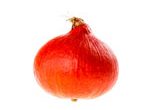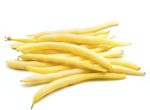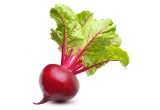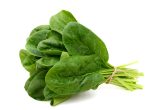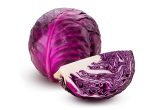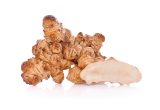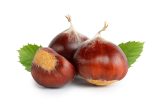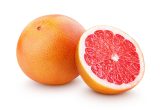Lychee

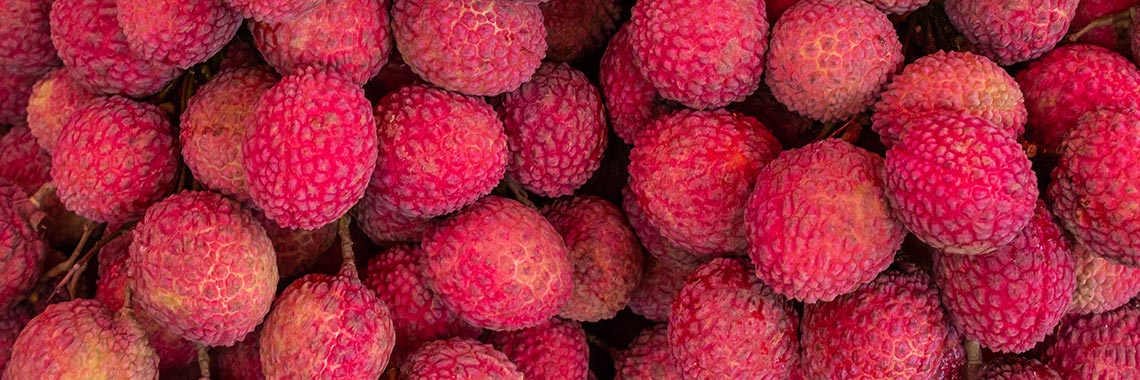
Description
- The lychee (Litchi chinensis Sonn.) belongs to the Sapindaceae family.
- Its fruit, native to Southeast Asia, is widely cultivated in warm regions around the world (de Azevedo, 2014; Huang, 2014).
- It is a non-climacteric fruit, meaning it only ripens on the tree (Wang, 2013).
PHYSICAL AND ORGANOLEPTIC CHARACTERISTICS
- ‘Chinensis’ lychee is characterised by a short shelf life and high seed content (Pandey, 2017).
- The fruit consists of drupes with a translucent white, solidified, sweet-tasting edible aril surrounded by a brightly coloured pericarp (Laï, 2014; Zeng, 2019).
- The red colour of the pericarp is the result of anthocyanin accumulation. This concentration varies among lychee cultivars, developmental stages and environmental stimuli (Laï, 2014).
- Rose oxide, an aromatic substance belonging to monoterpenes, gives lychee its smell (Tang, 2019).
- 31 components actively participating in the aroma of ‘Sweetheart’ lychee have been identified. Methional (baked potato) and geraniol (sweet, floral) are the most potent odorants, followed by furaneol (sweet, caramel), lenerol (floral, sweet), dimethyl trisulphide (preserved vegetable, sulphide), linalool (floral), (E, Z)-2,6 nonadienal (cucumber), and nerolidol (metal, sesame oil) (Feng, 2018).
- In addition, the flavour profile of ‘Sweetheart’ lychee has been described by sensory analysis. Floral, tropical fruit, peach/apricot and honey notes scored relatively high (Feng, 2018).
COMPOSITION CHARACTERISTICS (excluding macronutrients, vitamins and minerals)
- This fruit is an excellent source of nutrients, namely vitamin C and polyphenols (Pandey, 2017).
- The phenolic profile of lychee pulp of 13 different varieties was studied. Lychee pulp contains 101.51 to 259.18 mg gallic acid equivalent per 100 g fruit (total polyphenols) and 39.43 to 129.86 mg catechin equivalent per 100 g fruit (total flavonoids). However, the concentration of these compounds varies depending on the variety of lychee (Zhang, 2013).
- The main phenolic compounds in “Chinensis” lychee pulp are quercetin 3-O-rutinoside-7-O-α-L-rhamnosidase (quercetin 3-rut-7-rha), rutin and epicatechin. These phenolic compounds are thought to exhibit hypolipidemic activity by altering the expression of lipid metabolism-related microRNAs (miRNAs) (Su, 2017).
- A team has shown that phenolic compounds in lychee pulp appear to have both hepato-protective activity against stress-induced liver damage, but also against alcohol-induced liver damage (Xiao, 2017).
RAW
The following values are approximate and depend on variety, season, ripeness, cultivation conditions, etc.
The lychee provides an average of 81 calories (kcal) per 100 g, i.e. 344 kJ. A lychee portion (5 lychees) weighs on average 100 g.
COMPOSITION TABLES
For each nutrient, the tables provide information on the content, the minimum and maximum values, as well as the percentage of the Dietary Reference Values (DRVs) for 100 g net of raw lychees, pulp.
MACRONUTRIENTS
| Constituent (g) | Average content |
Min-Max per 100g |
DRV% |
|---|---|---|---|
| Water | 80,50 | NC - 81,80 | - |
| Fibers | 2 | 1,30 - NC | - |
| Carbohydrates | 16,10 | 13,80 - NC | 6,19 |
| Sugars | 15,70 | 15,20 - NC | 17,44 |
| Lipids | < 0,50 | 0,40 - NC | - |
| Saturated fat | < 0,01 | NC - 0,099 | - |
| Protein | 1,13 | 0,10 - 1,25 | 2,26 |
| Constituent (g) | Amount | Min-Max | DRV% |
|---|---|---|---|
| Water | Ciqual 2020 (valeur issue des analyses Ciqual-Aprifel 2017) | - | - |
| Fibers | Ciqual 2020 (valeur issue des analyses Ciqual-Aprifel 2017) | - | - |
| Carbohydrates | Ciqual 2020 | - | Règlement (UE) N°1169/2011 du parlement Européen et du conseil du 25 octobre 2011 |
| Sugars | Ciqual 2020 (valeur issue des analyses Ciqual-Aprifel 2017) | - | Règlement (UE) N°1169/2011 du parlement Européen et du conseil du 25 octobre 2011 |
| Lipids | Ciqual 2020 (valeur issue des analyses Ciqual-Aprifel 2017) | - | Règlement (UE) N°1169/2011 du parlement Européen et du conseil du 25 octobre 2011 |
| Saturated fat | Ciqual 2020 (valeur issue des analyses Ciqual-Aprifel 2017) | - | Règlement (UE) N°1169/2011 du parlement Européen et du conseil du 25 octobre 2011 |
| Protein | Ciqual 2020 (valeur issue des analyses Ciqual-Aprifel 2017) | - | Règlement (UE) N°1169/2011 du parlement Européen et du conseil du 25 octobre 2011 |
Zoom on carbohydrates
- The energy of the lychee comes mainly from its carbohydrates, at 16.10 g per 100 g.
- This amount is above the average quantity found in fresh fruit: about 11.31 g per 100 g.
- Its carbohydrates are mainly fructose (8.10 g per 100 g) and glucose (7.60 g per 100 g).
Zoom on fibres
- Lychees contain an average of 2 g of fibre per 100 g, which is lower than the average amount in fresh fruit (2.77 g per 100 g).
Zoom on proteins
- The protein content of lychees (1.13 g per 100 g) is higher than the average amount in fresh fruit: 0.93 g per 100 g.
Zoom on lipids
- Lychees are fat-free* as they contain less than 0.5 g of fat per 100 g.
*Regulation (EC) No 1924/2006 of the European Parliament and of the Council of 20 December 2006 on nutrition and health claims made on foods.
MINERALS AND TRACE ELEMENTS
| Constituent | Average content |
Min-Max per 100g |
DRV% |
|---|---|---|---|
| Calcium (mg) | 3,60 | NC - 5 | 0,45 |
| Chloride (mg) | < 20 | - | - |
| Copper (mg) | 0,20 | 0,15 - NC | 20 |
| Iron (mg) | 0,26 | NC - 0,31 | 1,86 |
| Iodine (µg) | < 20 | - | - |
| Magnesium (mg) | 18 | 10 - NC | 4,80 |
| Manganese (mg) | 0,10 | 0,055 - NC | 5 |
| Phosphorus (mg) | 27 | NC - 31 | 3,86 |
| Potassium (mg) | 200 | 171 - NC | 10 |
| Selenium (µg) | < 20 | - | - |
| Sodium (mg) | < 5 | 0 - NC | - |
| Zinc (mg) | 0,23 | 0,07 - NC | 2,30 |
| Constituent | Amount | Min-Max | DRV% |
|---|---|---|---|
| Calcium (mg) | Ciqual 2020 (valeur issue des analyses Ciqual-Aprifel 2017) | - | Règlement (UE) N°1169/2011 du parlement Européen et du conseil du 25 octobre 2011 |
| Chloride (mg) | Ciqual 2020 (valeur issue des analyses Ciqual-Aprifel 2017) | - | Règlement (UE) N°1169/2011 du parlement Européen et du conseil du 25 octobre 2011 |
| Copper (mg) | Ciqual 2020 (valeur issue des analyses Ciqual-Aprifel 2017) | - | Règlement (UE) N°1169/2011 du parlement Européen et du conseil du 25 octobre 2011 |
| Iron (mg) | Ciqual 2020 (valeur issue des analyses Ciqual-Aprifel 2017) | - | Règlement (UE) N°1169/2011 du parlement Européen et du conseil du 25 octobre 2011 |
| Iodine (µg) | Ciqual 2020 (valeur issue des analyses Ciqual-Aprifel 2017) | - | Règlement (UE) N°1169/2011 du parlement Européen et du conseil du 25 octobre 2011 |
| Magnesium (mg) | Ciqual 2020 (valeur issue des analyses Ciqual-Aprifel 2017) | - | Règlement (UE) N°1169/2011 du parlement Européen et du conseil du 25 octobre 2011 |
| Manganese (mg) | Ciqual 2020 (valeur issue des analyses Ciqual-Aprifel 2017) | - | Règlement (UE) N°1169/2011 du parlement Européen et du conseil du 25 octobre 2011 |
| Phosphorus (mg) | Ciqual 2020 (valeur issue des analyses Ciqual-Aprifel 2017) | - | Règlement (UE) N°1169/2011 du parlement Européen et du conseil du 25 octobre 2011 |
| Potassium (mg) | Ciqual 2020 (valeur issue des analyses Ciqual-Aprifel 2017) | - | Règlement (UE) N°1169/2011 du parlement Européen et du conseil du 25 octobre 2011 |
| Selenium (µg) | Ciqual 2020 (valeur issue des analyses Ciqual-Aprifel 2017) | - | Règlement (UE) N°1169/2011 du parlement Européen et du conseil du 25 octobre 2011 |
| Sodium (mg) | Ciqual 2020 (valeur issue des analyses Ciqual-Aprifel 2017) | - | - |
| Zinc (mg) | Ciqual 2020 (valeur issue des analyses Ciqual-Aprifel 2017) | - | Règlement (UE) N°1169/2011 du parlement Européen et du conseil du 25 octobre 2011 |
Zoom on minerals and trace elements
- Lychees are a source of copper, as they provide the equivalent of 20% of DRVs, i.e. 0.20 mg per 100 g. Moreover, according to the Ciqual 2020 table, lychees are one of the fruits containing the most copper.
- They also contain a significant amount of potassium, as they provide the equivalent of 10% of DRVs, i.e. 200 mg per 100 g.
- The other minerals and trace elements are present in quantities representing less than 6% of DRVs.
VITAMINS
| Constituent | Average content |
Min-Max per 100g |
DRV% |
|---|---|---|---|
| Provitamin A Beta-carotene (µg) | < 5 | 0 - NC | - |
| Vitamin A equivalent (µg) | < 0,83 | 0 - NC | - |
| Vitamin B1 (mg) | < 0,015 | 0 - NC | - |
| Vitamin B2 (mg) | < 0,01 | NC - 0,065 | - |
| Vitamin B3 (mg) | 1,06 | 0,60 - NC | 6,63 |
| Vitamin B5 (mg) | 0,055 | - | 0,92 |
| Vitamin B6 (mg) | 0,12 | 0,10 - NC | 8,57 |
| Vitamin B9 (µg) | 28,30 | 14 - NC | 14,15 |
| Vitamin C (mg) | 19,20 | NC - 71,50 | 24 |
| Vitamin E (mg) | < 0,08 | 0 - NC | - |
| Vitamin K1 (µg) | < 0,80 | 0 - NC | - |
| Constituent | Amount | Min-Max | DRV% |
|---|---|---|---|
| Provitamin A Beta-carotene (µg) | Ciqual 2020 (valeur issue des analyses Ciqual-Aprifel 2017) | - | - |
| Vitamin A equivalent (µg) | Calcul à partir de la valeur Provitamine A Béta-carotène* | - | Règlement (UE) N°1169/2011 du parlement Européen et du conseil du 25 octobre 2011 |
| Vitamin B1 (mg) | Ciqual 2020 (valeur issue des analyses Ciqual-Aprifel 2017) | - | Règlement (UE) N°1169/2011 du parlement Européen et du conseil du 25 octobre 2011 |
| Vitamin B2 (mg) | Ciqual 2020 (valeur issue des analyses Ciqual-Aprifel 2017) | - | Règlement (UE) N°1169/2011 du parlement Européen et du conseil du 25 octobre 2011 |
| Vitamin B3 (mg) | Ciqual 2020 (valeur issue des analyses Ciqual-Aprifel 2017) | - | Règlement (UE) N°1169/2011 du parlement Européen et du conseil du 25 octobre 2011 |
| Vitamin B5 (mg) | Ciqual 2020 (valeur issue des analyses Ciqual-Aprifel 2017) | - | Règlement (UE) N°1169/2011 du parlement Européen et du conseil du 25 octobre 2011 |
| Vitamin B6 (mg) | Ciqual 2020 (valeur issue des analyses Ciqual-Aprifel 2017) | - | Règlement (UE) N°1169/2011 du parlement Européen et du conseil du 25 octobre 2011 |
| Vitamin B9 (µg) | Ciqual 2020 (valeur issue des analyses Ciqual-Aprifel 2017) | - | Règlement (UE) N°1169/2011 du parlement Européen et du conseil du 25 octobre 2011 |
| Vitamin C (mg) | Ciqual 2020 (valeur issue des analyses Ciqual-Aprifel 2017) | - | Règlement (UE) N°1169/2011 du parlement Européen et du conseil du 25 octobre 2011 |
| Vitamin E (mg) | Ciqual 2020 | - | Règlement (UE) N°1169/2011 du parlement Européen et du conseil du 25 octobre 2011 |
| Vitamin K1 (µg) | Ciqual 2020 (valeur issue des analyses Ciqual-Aprifel 2017) | - | Règlement (UE) N°1169/2011 du parlement Européen et du conseil du 25 octobre 2011 |
Zoom on vitamins
- Lychees are a source of vitamin C, as they provide the equivalent of 24% of DRVs, i.e. 19.20 mg per 100 g.
- Lychees also provide a significant amount of vitamin B9, as they represent 14.15% of DRVs, i.e. 28.30 µg per 100 g.
- According to the Ciqual 2020 table data, lychees are among the fruits that contain the most vitamin B6 and B3 with:
- The other vitamins are present in quantities representing less than 1% of DRVs.
*Calculation made: Beta-Carotene / 6 + retinol
POLYPHENOLS
| Constituent (mg) | Average content |
Min-Max per 100mg |
|---|---|---|
| Total polyphenols | 28,80 | 28,80 - 28,80 |
| Constituent (mg) | Amount | Min-Max |
|---|---|---|
| Total polyphenols | Phenol explorer 3.6 Méthode utilisée : Folin Assay | - |
Zoom on polyphenols
- Polyphenols are substances with an antioxidant effect.
- Lychees contain a significant amount of polyphenols according to the Folin Assay method.
Nutrition and health claims
According to the definitions of nutrition claims as presented in Regulation (EC) No 1924/2006 on nutrition and health claims, and in view of the composition of lychees, the following claims may be used:
NUTRITION BENEFITS OF LYCHEES
- Source of vitamin C (100 g of lychees provide the equivalent of more than 15% of DRVs)
- Source of copper (100 g of lychees provide the equivalent of more than 15% of DRVs)
- Lychees are fat-free (they contain less than 0.5 g of fat per 100 g)
HEALTH CLAIMS (for a consumption of 100 g of lychees)
Vitamin C
- Vitamin C contributes to:
- normal function of the immune system during and after intense physical exercise,
- normal collagen formation for the normal function of blood vessels,
- normal collagen formation for the normal function of bones,
- normal collagen formation for the normal function of cartilage,
- normal collagen formation for the normal function of gums,
- normal collagen formation for the normal function of skin,
- normal collagen formation for the normal function of teeth,
- normal energy-yielding metabolism,
- normal functioning of the nervous system,
- normal psychological function,
- normal function of the immune system,
- protection of cells from oxidative stress,
- reduction of tiredness and fatigue,
- regeneration of the reduced form of vitamin E.
- Vitamin C increases iron absorption.
Copper
- Copper contributes to:
- maintenance of normal connective tissues,
- normal energy-yielding metabolism,
- normal functioning of the nervous system,
- normal hair pigmentation,
- normal iron transport in the body,
- normal skin pigmentation,
- normal function of the immune system,
- protection of cells from oxidative stress.
References
-
Agence nationale de sécurité sanitaire de l’alimentation, de l’environnement et du travail. Table de composition nutritionnelle des aliments Ciqual 2020. Consultée le 26/08/2020 depuis le site internet Ciqual https://ciqual.anses.fr/
- De Azevedo LH, Maeda EY, Inomoto MM, De Moraes GJ. A method to estimate the population level of Aceria litchii (Prostigmata: Eriophyidae) and a study of the population dynamics of this species and its predators on litchi trees in southern Brazil. J Econ Entomol. 2014; 107(1): 361-7.
- Feng S, Huang M, Crane JH, Wang Y. Characterization of key aroma-active compounds in lychee (Litchi chinensis Sonn.). Journal of Food and Drug Analysis. 2018; 26(2): 497-503.
- Huang F, Zhang R, Yi Y, Tang X, Zhang M, Su D, Deng Y, Wei Z. Comparison of physicochemical properties and immunomodulatory activity of polysaccharides from fresh and dried litchi pulp. Molecules. 2014;19(4):3909-25.
- Laï B, Li XJ, Hu B, Qin YH, Huang XM, Wang HC, Hu GB. LcMYB1 is a key determinant of differential anthocyanin accumulation among genotypes, tissues, developmental phases and ABA and light stimuli in Litchi chinensis. PLoS One. 2014;9(1):e86293.
- Neveu V, Perez-Jiménez J, Vos F, Crespy V, du Chaffaut L, Mennen L, Knox C, Eisner R, Cruz J, Wishart D, Scalbert A. (2010) Phenol-Explorer: an online comprehensive database on polyphenol contents in foods. Database, doi: 10.1093/database/bap024. Full text (free access)
- Pandey DK, Dey A, Singh J (2017). Biotechnological Advances in Lychee (Litchi chinensis) and Their Future Implication in Improvement of Crop. Syngapore : Springer, 55 p.
- Règlement (CE) N° 1924/2006 du Parlement européen et du Conseil du 20 décembre 2006 concernant les allégations nutritionnelles et de santé portant sur les denrées alimentaires.
- Règlement (UE) N°432/2012 de la Commission du 16 mai 2012 établissant une liste des allégations de santé autorisées portant sur les denrées alimentaires, autres que celles faisant référence à la réduction du risque de maladie ainsi qu’au développement et à la santé infantiles.
- Règlement (UE) n°1169/2011 du Parlement européen et du Conseil du 25 octobre 2011 concernant l’information des consommateurs sur les denrées alimentaires, modifiant les règlements (CE) n°1924/2006 et (CE) n°1925/2006 du Parlement européen et de Conseil et abrogeant la directive 87/250/CEE de la Commission, la directive 90/496/CEE du Conseil, la directive 1999/10/CE de la Commission, la directive 200/13/CE du Parlement européen et du Conseil, les directives 2002/67/CE et 2008/5/CE de la Commission et le règlement (CE) n°608/2004 de la Commission.
- Su D, Zhang R, Hou F, Chi J, Huang F, Yan S, Liu L, Deng Y, Wei Z, Zhang M. Lychee pulp phenolics ameliorate hepatic lipid accumulation by reducing miR-33 and miR-122 expression in mice fed a high-fat diet. Food & Function. 2017;8(2):808-15.
- Tang ZS, Zeng XA, Brennan MA, Han Z, Niu D, Huo Y. Characterization of aroma profile and characteristic aromas during lychee wine fermentation. Journal of Food Processing and Preservation. 2019;43(8).
- Wang H, Qian Z, Ma S, Zhou Y, Patrick JW, Duan X, Jiang Y, Qu H. Energy status of ripening and postharvest senescent fruit of litchi (Litchi chinensis Sonn.). BMC Plant Biol. 2013;13:55.
- Xiao J, Zhang R, Huang F, Liu L, Deng Y, Wei Z, Zhang Y, Liu D, Zhang M. The biphasic dose effect of lychee (Litchi chinensis Sonn.) pulp phenolic extract on alcoholic liver disease in mice. Food Funct. 2017;8 :189-200.
- Zeng Q, Xu Z, Dai M. Effects of simulated digestion on the phenolic composition and antioxidant activity of different cultivars of lychee pericarp. BMC Chemistry. 2019;13(27).
- Zhang R, Zeng Q, Deng Y, Zhang M, Wei Z, Zhang Y, Tang X. Phenolic profiles and antioxidant activity of litchi pulp of different cultivars cultivated in Southern China. Food Chem. 2013;136(3-4):1169-76.





